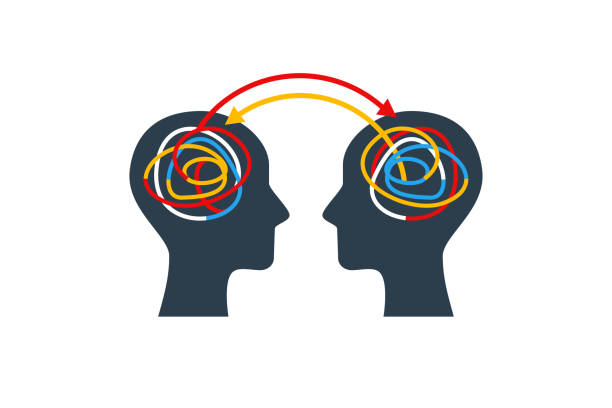By Christopher Corts, Professor of Law, Legal Practice, University of Richmond School of Law
Hello, reader! Today I am writing the first of a two-part series that will explore why and how we might facilitate better public conversations, especially when they include controversial topics. In today’s entry, Part I, I will explain why I think new ABA Standards 303(b) and (c) present an opportunity to have some hard but necessary public conversations. I will also share some thoughts on why we should have those conversations, why those conversations can be so difficult, and what we can reasonably expect them to accomplish. (Spoiler alert: not much! Even so, I think they are important for reasons I will explain.)
In a future blog post, Part II, I will give concrete ideas for how to plan and facilitate public conversations in a slower, less reactive, more intentional, inclusive, and meaningful way.
Whenever I facilitate a public conversation, my aim is to try and find a way to facilitate mutual compassion, respect, and trust among participants from the very start. Trust makes broader participation more likely. In my experience, when trust exists, it can also improve the quality of conversation by improving the likelihood that candid, authentic points of view will be voiced—and heard. We should want everyone to leave the conversation thinking something like: “I appreciate the opportunity to finally speak from my heart, and I have appreciated hearing others speak from theirs.” (Why I think this is so important will likely become clearer as you read on.)
Facilitating these kinds of conversations will be especially important as we implement new ABA standard 303(b) & (c). At the risk of understatement: there is nothing close to universal agreement about these standards. Even so, they exist. Now what?
Well…let’s talk about it.
For the unfamiliar: new ABA standard 303(b) mandates that “a law school shall provide substantial opportunities to students for…the development of a professional identity.” New ABA Standard 303(c) specifies that, as part of its curriculum, “a law school shall provide education to law students on bias, cross-cultural competency, and racism.”[i]
Considered together, these two new standards suggest that, if we are going to effectively teach students how to internalize a professional responsibility for clients and the integrity of the legal system [as we must, under Standard 303(b)], we must help students learn how to detect, address, and overcome the pernicious effects of racism and bias [Standard 303(c)] in our own profession.
“We” cannot credibly pretend to hold a unified, consensus point of view on any of this. And if you disagree with me …I invite you to take issue with me which helps to illustrate the point.
Talking about racism and bias introduces language, concepts, and (different) preferred modes of discourse. Educating students about racism and bias from a distance will not do. We desperately need to assume a curious, searching, self-aware, self-critical approach. And as we do: welcome the many different perspectives on what is worthy of criticism in our community.
This might be unpleasant—but it is not unhealthy. A healthy community must learn to live in conversation with itself through serious conflicts, or it cannot exist as a community. We need to model for our students a way of facilitating conversations designed to do that. Especially because we live and work in a dominant culture that indulges in calling-out more than conversation, values casting-out more than confession, and is more eager to cancel—or complain about cancelling—than showing signs of contrition.
We are a roiling mess, you may have noticed.
The American Bar Association’s “Profile of the Profession,” published annually, can help us start the hard conversations that we need to have. Before we get to any discussion of values, politics, perceptions, policies, aspirations, or goals….we need to understand who “we” are, demographically, and work our way out from there. Historically—and in the year 2022, specifically—where, when, and how well have we included (dare we ask: how well have we welcomed?) people of color, women, sexual minorities, people with disabilities, and other historically-excluded-or-marginalized people into all the corners of our profession?
To be sure, the data paints an encouraging picture of progress. Things are better, yes! And still so horrible. The data also paints a sobering, bleak, and utterly pathetic picture of how we continue to struggle to undo the stubbornly pernicious effects of America’s long history of racism, bias, and exclusion. With a shared understanding of the current demographic data (and recent trends) in view, we can move on to voicing the harder, more contestable, and wildly variable personal perceptions, beliefs, experiences, commitments, political convictions, and values that, collectively, are represented among us.
My own experience participating and facilitating hard conversations began over two decades ago, prior to law school, in a different profession. While pursuing a master’s degree in theology, I began to train and engage in ecumenical and inter-religious dialogues about a range of hotly-contested political, theological, and social issues. In recent years, in partnership with the Inner Work Center (formerly known as the Chrysalis Institute, located in my hometown of Richmond, Virginia), I have moderated a series of public conversations involving faith leaders who represent six of the world’s religious traditions, on a range of hot topics related to living, dying, sin, grace, justice, and social transformation. And, like all law professors, I have had many opportunities to either participate in or facilitate hard conversations in and out of the classroom with students, faculty, staff, and alums. (Most recently, these kinds of conversations have tended to recur in my work as a co-facilitator of a spiritual well-being program for first-generation 1Ls, called Just Practice; as co-facilitator of a Law, Race, and Power (LRP) Speaker’s Series; and as co-facilitator of a LRP spin-off program, Let’s Talk About It).
All of these experiences have helped me appreciate the value of a form of conversation that is distinct from arguments or debates. The point of these conversations is to speak with courage, hear with compassion, and be heard without being contradicted. And, by doing that, to simply know ourselves and each other better.
The starting point for these conversations is a mutual agreement to forswear any attempt to try and correct or convert dissenters. All speakers are liberated to voice their point of view without being interrupted, corrected, confronted, contradicted, or condescended-to. It is conversation that permits error, tolerates confusion, extends grace to the mistaken or offensive. It is focused on bringing hidden things to light—the deepest hopes, fears, grievances, and frustrations that too often remain hidden beneath the surface in everyday discourse. It is not a conversation that is burdened by usefulness; it is not designed to fix anything, resolve anything, or identify any commonality or unity. It is conversation that is beautiful and pleasing because it invites everyone present to speak and be heard if they wish, on topics of their choosing.
At their best, these kinds of public airings elucidate the sharp contours of conflict and difference. It’s hard work; many of us prefer conflict-avoidance. Speaking with candor and authenticity takes courage, but hearing those things without reacting or making snap-judgments does, too. To speak and hear things that expose deep differences requires a kind of humility and curiosity, a willingness to risk, and a radical tolerance. The goal is to get it all out—to hear “it” all, whatever “it” may be. And then to just let it be, for now.
In my experience, these kinds of conversations can be hard in two senses. First, they require at least some participants to hear and understand information that is in tension with—or possibly even in direct contradiction to—their perceptions, values, political commitments, religious convictions, or personal experiences. Everyone will likely hear (albeit at different times) stupid, offensive, wrong-headed, poorly-reasoned, outrageous, misguided, flat-wrong things. But this is not a problem; it is the point, really.
And so, hard as it may be…to engage in this conversation requires everyone to buy-in to the premise that it might be difficult to join in this conversation. Public displays of emotion are possible, maybe even likely. And that is ok. And everyone, of course, must be free to exit themselves from the conversation if they wish, whenever they wish.
These kinds of conversations are also “hard” in a second sense—in the way that they can tax the patience and goodwill of everyone participating in them. These kinds of conversation take a lot of time, intention, planning, and discipline. Bluntly: hard conversations do not seem to accomplish much. This can be especially irritating for lawyers, who tend to suffer from acute time deprivation. Most of us have been taught to value efficiency, crave productivity, and adopt a bias toward action. We are valued for our issue-spotting and problem-solving capabilities. It is hard to have a conversation that is not a means to some clear, desirable end.
For me? They can be difficult. But I have learned to appreciate how these conversations give a clearer field of perception, a sharper and more nuanced view of just how diverse, different, disunified, and riddled with conflict, division, and disagreement we really are. And I experience a strange satisfaction when, after the conversation, I can continue to dialogue and converse casually with the participants knowing more about just how radically different we are, in some ways—while enjoying the mystery of how we are able to co-exist with genuine kindness, respect, and civility, just the same.
On that hopeful and buzz-killing note, I will conclude this Part I. Next time, in Part II of this series, I will share concrete suggestions for how you might plan and execute public conversations about difficult topics in a way that is most likely to include the most people and elicit the most candid, forthright, and sincere comments possible—especially the ones that are voiced in criticism or dissent.
Until then…if you have any questions, concerns, or comments you would like to share, please email me! I would love to hear from you. You can reach me at ccorts@richmond.edu.

Christopher Corts, Contributor
[i] For a helpful introduction to these standards, see Neil W. Hamilton and Louis D. Bilionis, “Revised ABA Standards 303(b) and (c) and the Formation of a Lawyer’s Professional Identity, Part 1: Understanding the New Requirements,” PDQ in NALP Bulletin+ (May 2022).



